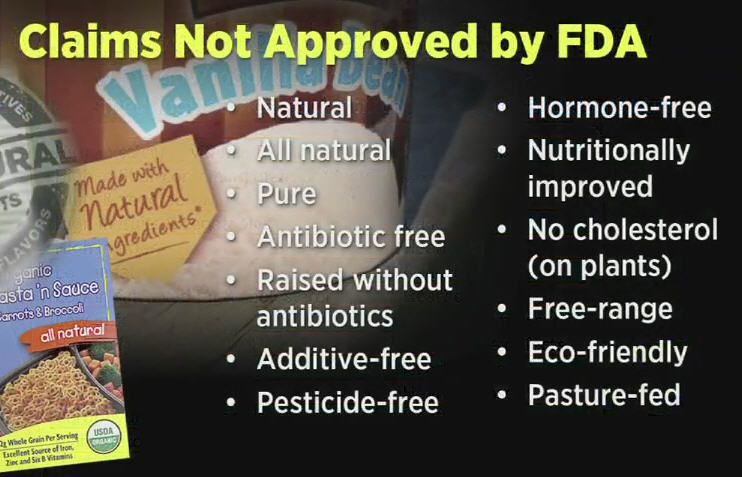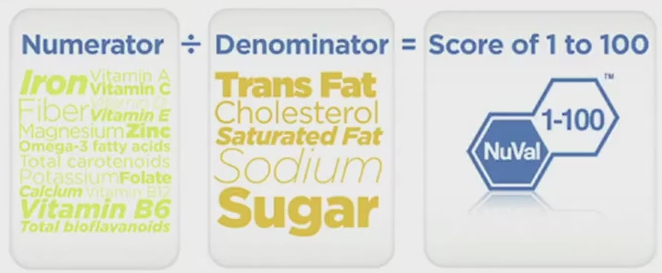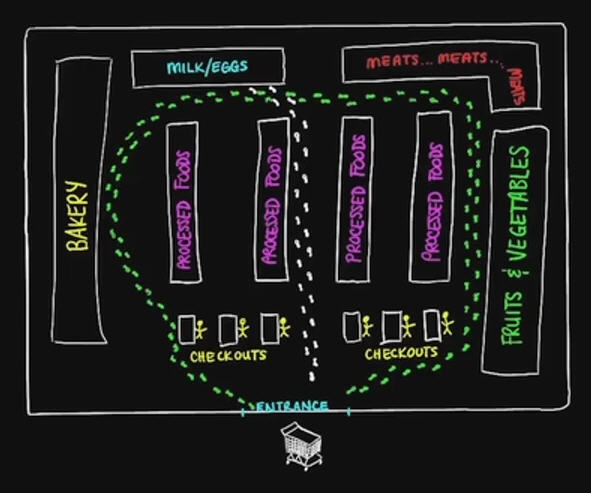What do our food packages really tell us about our food?
Dr David Katz, an internationally renowned expert in health promotion, was sitting at a round table with other colleagues and industry professionals. They were each given three minutes to give an idea on how to combat the growing obesity epidemic.
When it came to his turn, he began with a story. His wife has a PhD in neuroscience from Princeton University. She was a mother of five and accomplished cook. Suffice to say, she was intelligent and successful in all facets of her life. However, when she would go to the grocery store, she couldn’t even determine which loaf of bread would be the most healthy to purchase for her family.
Bread A had the most fiber, but also the most sodium Bread B had less sodium and less fiber, but added sugar with HFCS listed in the ingredients. Bread C didn’t have added sugar, and it says “No Trans Fat” but listed partially hydrogenated oils in the ingredients list. Bread D says it is multi-grain, but has the least fiber. And who knows if it is actually whole grain?
The point was this. If this accomplished woman with a PhD in neuroscience cannot figure out which loaf of bread to buy at the grocery store, the process is likely a little too complicated.
Has this ever been you in the grocery store? I know I have been there. Our lives are busy. We don’t have time to sit and decipher three different labels of slightly different products and try to determine which is the best. Today I want to help shed some light on what it all means so next time you go to your grocery store, you are armed with the knowledge to make healthy decisions.
Did you know? It wasn’t until 1990 that nutrition labeling became mandatory for most processed foods. It is voluntary for fresh meat, poultry, fish, eggs and produce.
Below is a list of what all the nutrition content claims actually mean, according to the FDA:
- FREE – contains insignificant amount of fat, cholesterol, sodium, sugar or calories
- LOW – can be eaten often without exceeding dietary guidelines
- REDUCED, LESS, FEWER – contains 25% less of a nutrient or calories
- LIGHT / LITE – contains 1/3 fewer calories or /2 the fat of original product
- LEAN – contains less than 10g fat, 4g saturated fat and 95mg cholesterol per serving
- EXTRA LEAN – contains less than 10g fat, 2g saturated fat and 95mg cholesterol per serving/li>
- MORE / EXTRA – contains at least 10% more of the % DV (Daily Value) than usual per serving
- GOOD SOURCE OF – contains 10-19% of % DV in a serving

The following are mandatory to include on nutrition labels with % Daily Values:
- Total calories, calories from fat, total fat, saturated fat, cholesterol, sodium, dietary fiber, sugar, vitamins A / C, calcium, iron.
What’s interesting about this list? Where is protein? Why Vitamins A / C, calcium and iron and not other vitamins and minerals? Nutrients associated with nutrition or health concerns are required. Too many calories, too much fat, sugar, sodium, etc. This is why these are mandatory on the label. This is also why protein is not listed. Protein is not a problem nutrient, so it does not have a % DV requirement. Why the vitamins and minerals? Generally speaking, the population is deficient in Vitamins A / C, and calcium and iron (particularly in women)./p>
% Daily Values are absolutely worthless. Levels for nutrients developed for nutrition labels are based on RDA (Recommended Dietary Allowance). % DV figures are nutrient amounts in one serving. Values for total fat, saturated fat and carbohydrates are based on intake of 2000 calories.
- %DV for total fat based on 30% of total calories from fat
- Saturated fat based on 10% total calories
- Carbohydrate based on 60% of total calories
Starting to see why these numbers are useless to you? They are percentages based off 2000 calories diet. What if your nutrition plan calls for 1500 calories? Or 3000 calories? These percentages would be way off. Not to mention they suggest 60% of your total calories should come from carbohydrates! If you look at these numbers or base any decisions off them, I recommend you stop doing so. Unless of course, you happen to be the lucky individual that needs exactly 2000 calories a day to achieve your ideal body composition.
Did you know? All ingredients must be listed in descending order of amount present. The ingredients with the greatest proportion of product’s weight are listed first.

Let’s circle back to our story about Dr David Katz. What role does he play in all this? He is one of the pioneers of the Nuval system. The round table meeting was the initial concept of Nuval If you are fortunate enough to have this system at your local grocery store, this has made shopping easy for you. Nuval is a nutritional scoring system. Remember the bread example? Nuval considers 30+ nutrients and nutrition factors in determining a score of 1-100 for products. The higher the score, the better overall quality. Not sure which bread to buy, buy the one with the highest score. Unfortunately, for me in Concord, NC I don’t have the Nuval system at my local grocery stores. It is currently in about 1700 grocery stores nationwide. While we don’t have the luxury of this simplified points system that tells us which version of the product we purchase, we can still make knowledgeable decisions.

Credit to Maya Adam, MD of Stanford University for the grocery store picture. Also, Jamie Pope, MS, RD, LDN of Vanderbilt University as a resource of content for this article.
My final question to you: Do you shop at a store with the Nuval points system? If so, please share your experience in the comments section below for the rest of us!
Brian
Brian is a Metabolic Effect-Certified Personal Trainer and nutrition enthusiast. He utilizes his background in IT troubleshooting to diagnose and resolve nutrition and fitness concerns for clients. He offers holistic online training packages at his website Fact & Fitness.com. You can also find him on social media at Twitter and Facebook.





